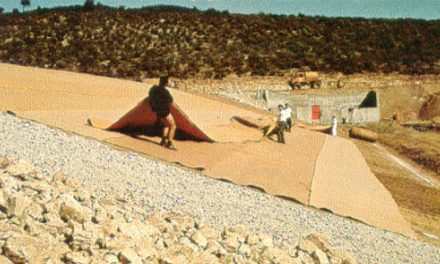 The textiles and clothing sector, especially the highly stressed spinning segment, is keeping its fingers crossed. A glimmar of hope after the formation of a new government at the centre in June-July after the conclusion of the general elections (2024). Whether it will be a continuation of the NDA regime or an Indian Bloc-led government is hard to predict. The fact of the matter is that the spinning sector needs the government’s immediate intervention.
The textiles and clothing sector, especially the highly stressed spinning segment, is keeping its fingers crossed. A glimmar of hope after the formation of a new government at the centre in June-July after the conclusion of the general elections (2024). Whether it will be a continuation of the NDA regime or an Indian Bloc-led government is hard to predict. The fact of the matter is that the spinning sector needs the government’s immediate intervention.
First and foremost, a one year moratorium on repayment of principal amount on the loans availed of by spinners. This and other financial supports are required for the mutual benefit of the industry and the public financial institutions. Second is the conversion of the three – year Emerging Credit Line Guarantee Scheme (ECLGS) loans into six year term loans. Repayments of these loans have begun, further affecting the working capital. More assistance to mitigate the stress on the working capital, on a case by – case basis, is also required. The financial stability of the spinning segment is imperative to sustain the global competitiveness of the textiles and clothing sector that provides jobs for over 110 million people, especially those below the poverty line and women folks. These measures will resolve most issues affecting the spinning segment’s performance at present. Under ECLGS an amount of 2.82 lakh cr was disbursed till sept. 2022, of which textile’s account for about Rs.16,920 cr. The textiles industry is predominantly decentralised and MSME (Micro, small and medium enterprises) in nature. It is large employment provider, next only to agriculture generating direct jobs to over 45 million people and indirect jobs to over 60 million people particularly rural people.
While seeking urgent measures it is to be noted that in the past few years, the government has in fact been taking various pro-active and path breaking policy initiatives to achieve a total textile business size of dollar 350 billion by 2030 from the present dollar 169 billion. Union textiles minister Piyush Goyal has recommended the removal of 11 percent import duty on cotton and promised to address issues relating to quality control orders for import of some man- made fibre items.
Besides the government has introduced remission of duties and taxes on exported production (RODTED) scheme and removed anti-dumping duties on key raw materials, including PTA, MEG, VSF, PSF, acrylic, digitalisation of compliances. In addition, free trade agreements have been signed with UAE. Australia and Mauritius and speaded up the signing process with the UK and other leading global textile markets. It has also launched “Kasthuri cotton bharat”, a premium cotton brand for long staple cotton varieties and formed textile advisory groups for cotton and MMF and holding frequent meetings to address the issues.
Goyal has also set an “ambitious” target of raising the industry’s capacity by ten times without indicating a time – frame. He wants a team of officers in the ministry to prepare a detailed action plan for each segments ranging from fibres and garments to handlooms and handcrafts, along with the deadlines. MMF, along with technical textiles and handlooms has been identified as key thurst areas. At present, the size of the textile industry is dollar 140 bn with apparel accounting for over half the share.
Textile’s share in India’s GDP is estimated at about 2-3 percent. With around a quarter of products getting exported the government thinks that a slew of steps, including the extension of rebate of state and central taxes and levies will provide clarity to exporters when they negotiate contracts. Similarly the integrated textiles parks are seen to be another thrust area with the proposed FTAs with the UK and the EU expected to provide further fillip to Indian exporters. With lower duties in these markets, the industry is hopeful of competing effectively with rivals such as Bangladesh, which enjoy wage and tariff advantages.
The Minister has also asked his team to focus on improving the quality of handloom’s and handicrafts and standardising it as there is a vast potential in a growing market such as India, apart from the export markets.
On non-tariff barriers imposed on Indian exports by some countries Goyal warned that New Delhi will not hesitate to use this mechanism against those countries that resort to apply these tools including unnecessary registration and compliance requirements or standards and levels of pesticides.
With textiles, food and other products face repeated hurdles as countries have chosen to prescribe their own standards, often ignoring what international norms are. India has also resorted to use some of these tools, bringing trade partners such as EU and the US on the negotiating table.
The Minister’s statement comes in the wake of moves to push environmental standards, with the EU and the UK now using carbon border tax to increase levies on imported sleet and other items New Delhi has argued that these are all non-tariff barriers, not allowed under global rules.
Goyal has sought suggestions from the Industry on steps to further ease life for business, cut down compliance and logistics costs and ways to attract investment. The problem is that India does not have data of other countries on non-tariff barriers.
Another major issue is the threat to cargo vessels in the Red Sea that will lead to a surge in container shipping rates. The crisis in the Red Sea would indeed impact India’s trade and may lead to further contraction says Sachin Chaturvedi, Director General of a New Delhi – based think lank. The Government has not released any official estimates on the impact of the Red Sea crisis on Indian exports.
The number of ships passing through the suez canal is down about 44 percent compared to the average for the first half of December 2023 according to Clarkson Research Services a unit of world largest ship broker vessels.
On its part, the Tamil Nadu Government will soon release a revised textile policy aimed at making the state a leader in the sector. The Government boasts of the state taking the top position as the largest exporter of textiles and garments. The policy seeks to extend benefits to manufacturing units with less than Rs.50 crore investment which are involved in man-made fibre production. The growth of the textile sector and its contribution to the state are integral for the state to achieve its goal of one trillion economy by 2030 State Textile Minister R. Gandhi has said. The state government has received 110 applications for setting up mini textile parks of which 10 such parks have been approved.


















